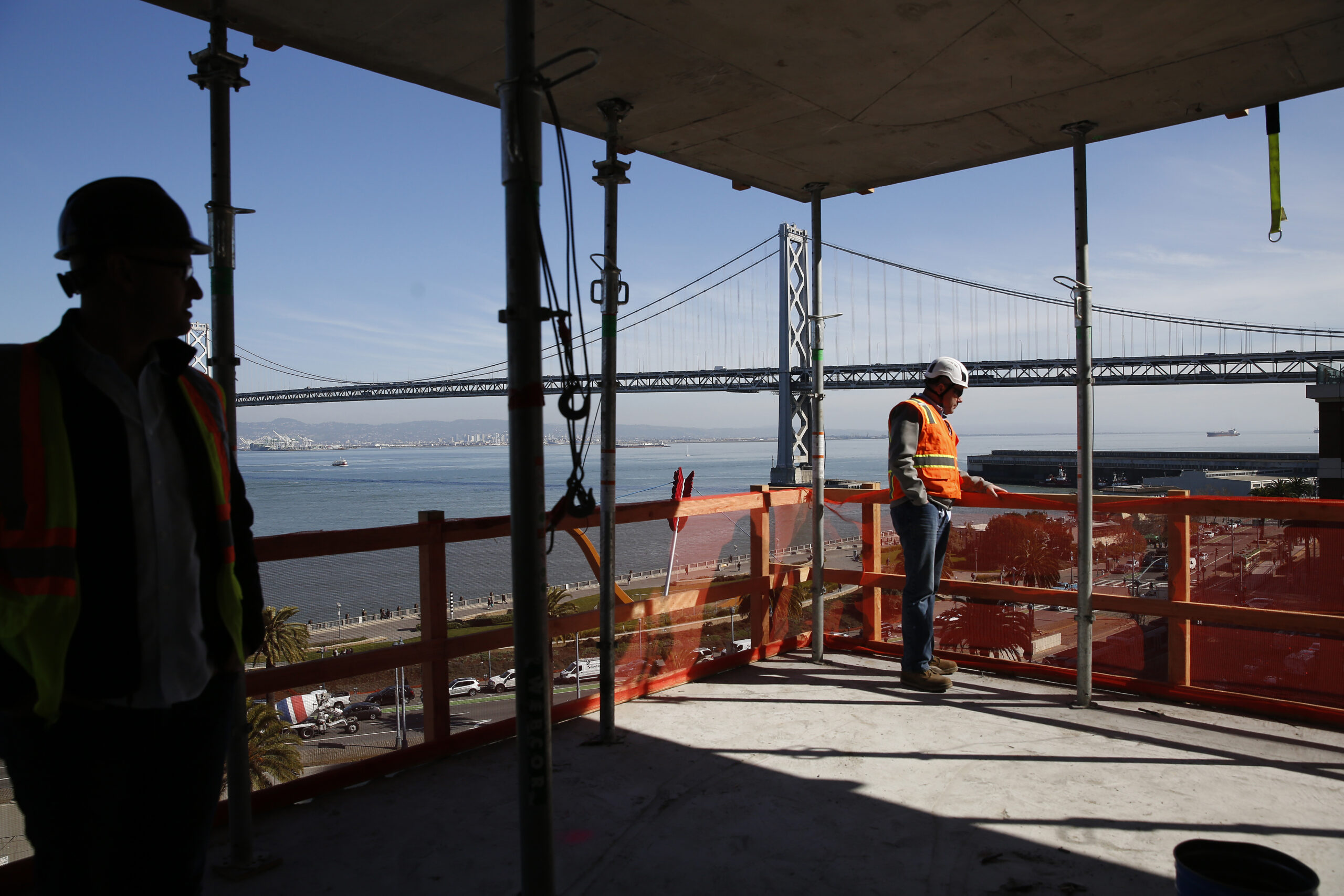Downtown San Francisco’s office exodus has drawn plenty of attention to tech layoffs and a so-called “doom loop.” But the hollowed-out skyscrapers, gathering dust since the dawn of the work-from-home revolution, have also hit the city’s construction workforce hard.
“We can draw a direct line from the vacancies Downtown to the lack of work,” said Rudy Gonzalez, secretary-treasurer of the San Francisco Building and Construction Trades Council, which represents 27 unions for skilled contractors and construction workers in the city.
The Standard spoke to three contractor unions that say a combined total of 1,200 unionized tradespeople are out of work due to the Downtown doom loop. The actual number of out-of-work tradespeople, including non-unionized workers, is likely to be much higher, unions say.
Gonzalez said the tally of roughly 1,200 out-of-work construction workers comes from a late April survey of all 27 unions’ unemployed member lists he conducted.
“About 10% of the unionized construction workforce in San Francisco is unemployed,” Gonzalez said.
“It’s worse than 2008, just in terms of the extent of time and amount of people out of work,” said Larry Mazzola, a business manager for plumbers union UA Local 38, which has 200 members currently out of work. Between September 2006 and the last quarter of 2008, approximately 780,000 U.S. construction jobs disappeared, according to the International Labor Organization.
‘There’s Just No Work’
San Francisco carpenter Ronald Garibaldi said he’s been out of work since Covid restrictions began in March 2020, despite many attempts to get work since then.
“It’s like a brick wall, man,” Garibaldi said. “It wasn’t easy then, and it still isn’t easy getting work.”
Garibaldi has worked as a unionized carpenter after leaving the Navy in 2016. Before 2020, he worked on SoMa building projects as well as lighting work for the Chase Center.
Michelle Leonard-Bell, executive director at Mission Hiring Hall, a nonprofit job placement agency serving construction workers, said she’s worked with Garibaldi since February.
“He was looking for months before I started working with him,” Leonard-Bell said. “He’s completely employable. There’s just no work.”
Leonard-Bell said there are many workers like Garibaldi who are out of work due to empty Downtown San Francisco offices.
“We have lots. They’re just hoping one of our construction partners has said that they need workers. They check in with us weekly,” Leonard-Bell said. “They’re all in the same boat.”
‘Bread and Butter’
One of the primary drivers of work—the remodeling and revamping of Downtown office spaces, or “tenant improvement projects”—was quashed by 2020’s shift to working from home, which has remained to this day for many office workers.
“Tenant improvement projects are the bread and butter for plumbers and electricians,” said Joshua Arce, director of workforce development for the city’s Office of Economic and Workforce Development. “Reductions in tenant improvement work and the drop in construction hours is the most significant driver of unemployment in plumbers and electricians.”
Gonzalez said tenant improvement work was common before Covid and would involve multiple skilled tradespeople doing a wide range of work. When a company takes over a lease, it often redoes the floor plan of the office, and even existing tenants would remodel their office from time to time.
“People would want glass walls, or they’d want an open floor plan—any improvement to a space involves construction,” Gonzalez said. “Moving a wall can involve framing, drywall, plumbing, electrical.”
Arce said his office is working hand-in-hand with Mayor London Breed and other city departments on a plan to attract businesses back to Downtown and reactivate the area while boosting construction jobs.
“We want to see more opportunities Downtown in construction,” Arce said. “More work is coming back, but not enough, especially in Downtown.”
“Something needs to happen, and I think the first step is attracting businesses back to Downtown,” Mazzola said.
Several prominent construction companies that operate in San Francisco, including Emerald Fund, Tishman Speyer and Strata Investment Group did not respond to requests for comment in time for publication.
